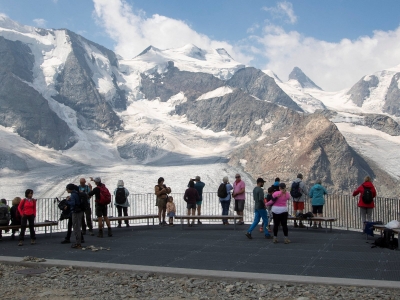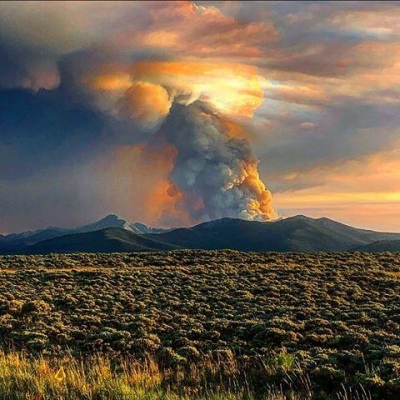WHAT IS HAPPENING TO THE ALPS GLACIERS?

The Alps glaciers in Switzerland are on track for their highest mass losses in at least 60 years of record keeping, data shared exclusively with Reuters shows. By looking at the difference in how much snow fell in winter, and how much ice melts in the summer, scientists can measure how much a glacier has shrunk in any given year. Since last winter, which brought relatively little snowfall, the Alps have sweltered through two big early summer heatwaves.
During this heatwave, the elevation at which water froze was measured at a record high of 17,000 feet - at an altitude higher than Mont Blanc's compared with the normal summer level of between 9,800-11,500 feet.
"It's really obvious that this is an extreme season," Swiss glaciologist Andreas Linsbauer said, shouting over the roar of rushing meltwater as he checked the height of a measuring pole jutting out of the ice on the massive Morteratsch Glacier in Switzerland. The measuring poles he uses to track changes in the depth of the pack are at risk of dislodging entirely as the ice melts away and he needs to drill new holes.
Vanishing glaciers are already endangering lives and livelihoods. Further, Swiss residents worry that the glacier losses will hurt their economy. Some area ski resorts of the Alps, which rely on these glaciers, now cover them with white sheets to reflect sunlight and reduce melting.
Mountain meltdown
Most of the world's mountain glaciers-remnants of the last ice age-are retreating due to climate change. But those in the European Alps are especially vulnerable because they are smaller with relatively little ice cover. Meanwhile, temperatures in the Alps are warming at around 0.3C per decade-around twice as fast as the global average
If greenhouse gas emissions continue to rise, the Alps glaciers are expected to lose more than 80% of their current mass by 2100. Many will disappear regardless of whatever emissions action is taken now, thanks to global warming baked in by past emissions, according to a 2019 report by the UN Intergovemmental Panel on Climate Change
The dire situation this year raises concern that the Alps glaciers might vanish sooner than expected. With more years like 2022, that could happen, said Matthias Huss who leads Glacier Monitoring Switzerland (GLAMOS). "We are seeing model results expected a few decades in the future are happening now." Huss said. "I not expect to see such an extreme year so early in the century."
ALPS FACTS
• Located within the continent of Europe, the Alps mountain range is more than 1,000 km long.
• Though it spans several countries from France to Albania, it is Switzerland and Austria that are considered to be the Alpine heartland.
• The Alps is crucial for the livelihood of Europe as it provides water for drinking, irrigation, and hydroelectric power.
• Given its vastness and varied mountain elevation, the Alps has a huge impact on the weather patterns and the natural environment of the continent. In short, when the Alps is affected, it will have a bearing on several parts of the continent.
Himalayan thaw
Himalayan glaciers are also on track for a record ice loss year. When the summer monsoon season arrived in the Kashmir region, for example, many glaciers had already shrunk drastically, with their Snowlines starting high up the mountain, after a March-May heatwave marked by temperatures above 48C in northern India. An early June expedition in India's Himachal Pradesh found that the Chhota Shigri Glacier had lost much of its snow cover. "The highest temperature in over a century in March through May clearly had its impacts," said glaciologist Mohd Farooq Azam at the Indian Institute of Technology Indore.
Picture Credit : Google
